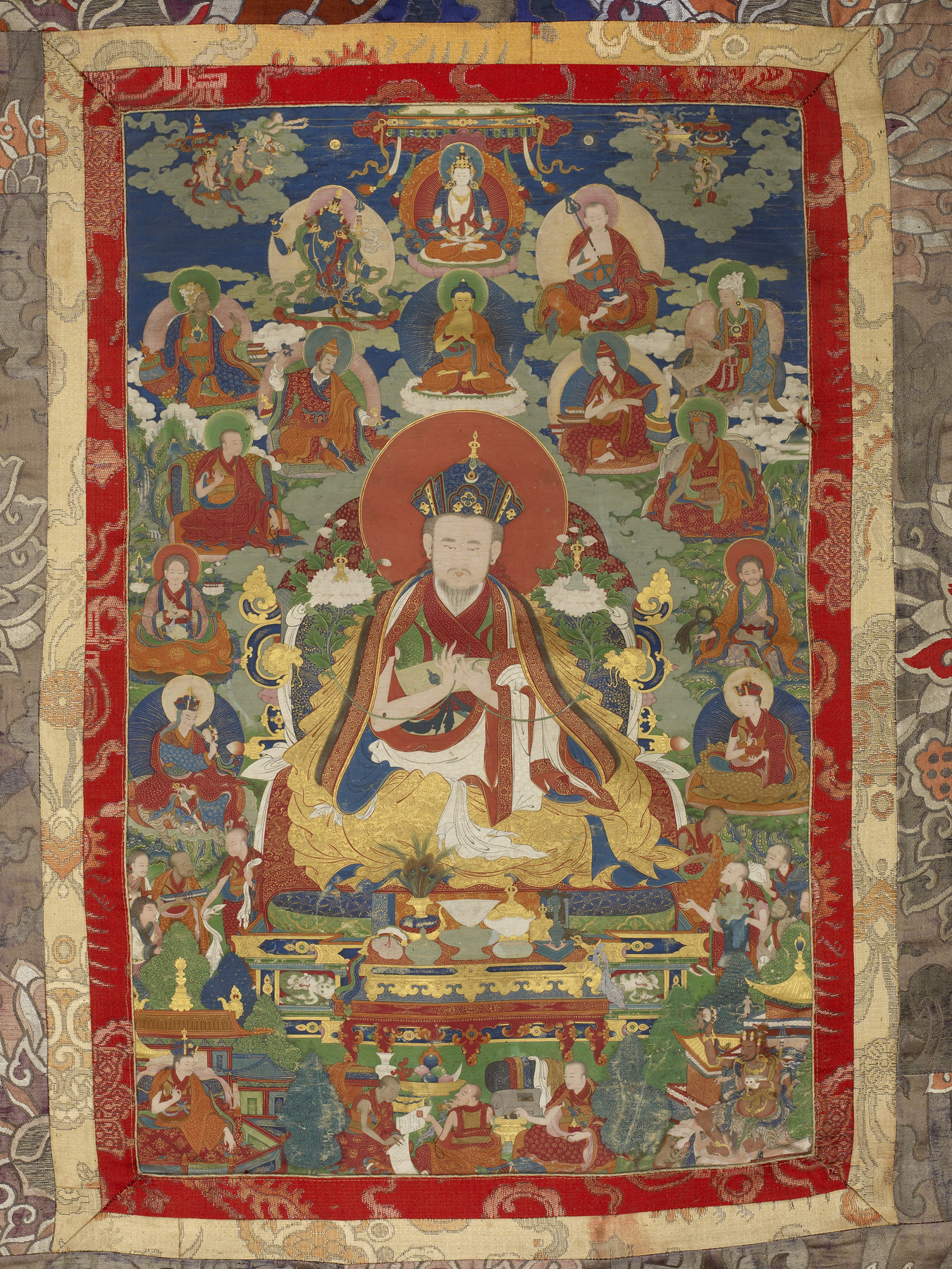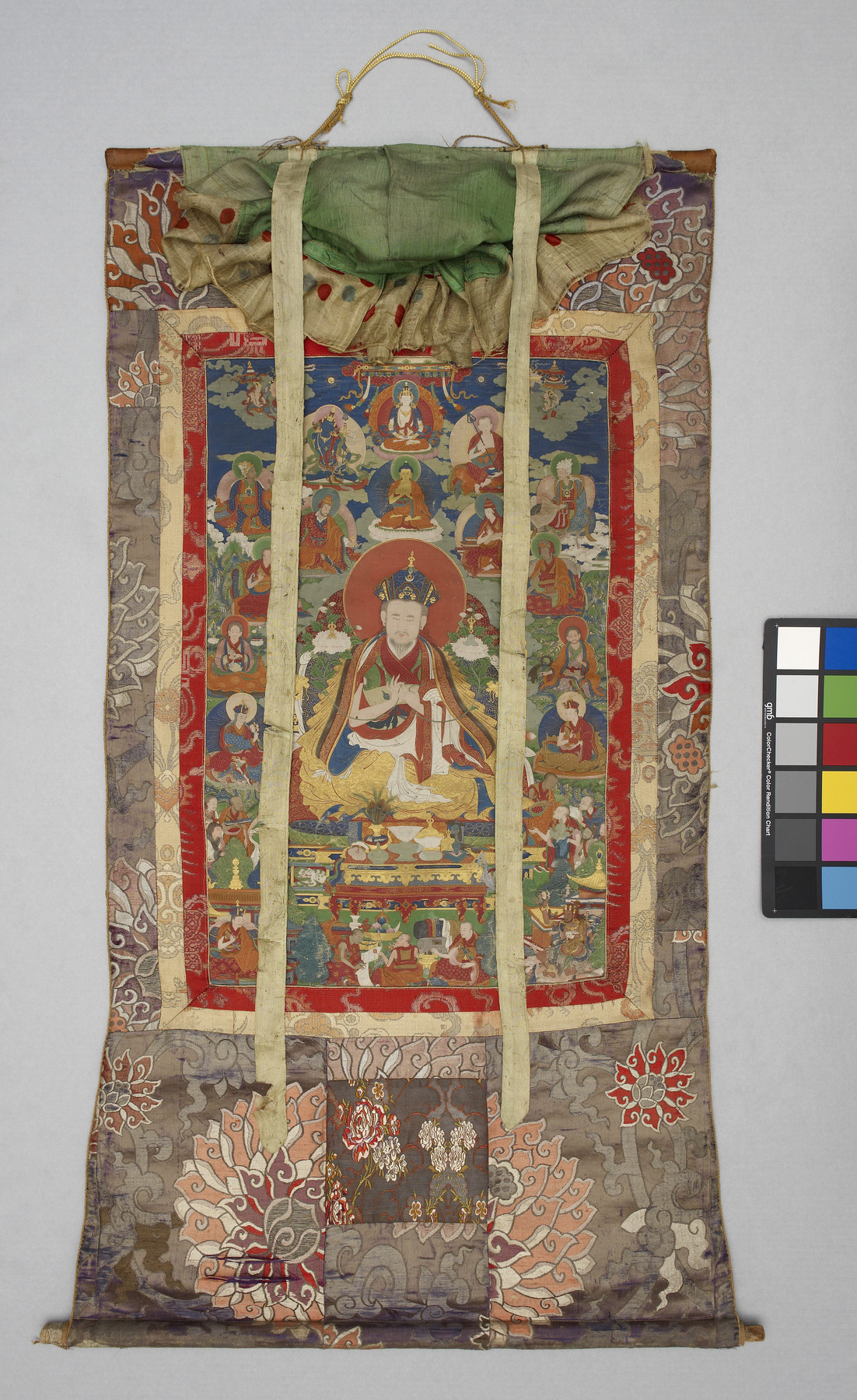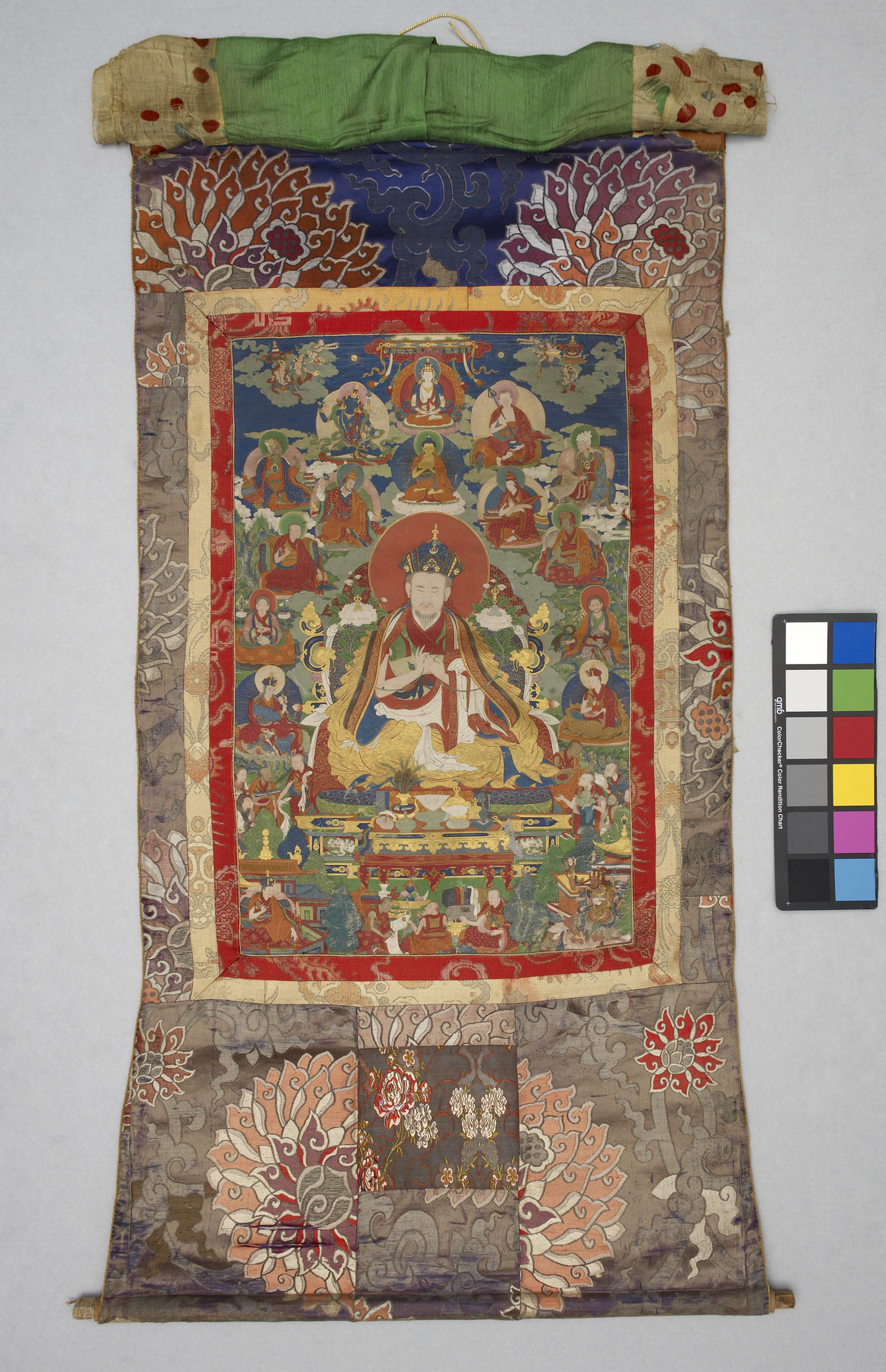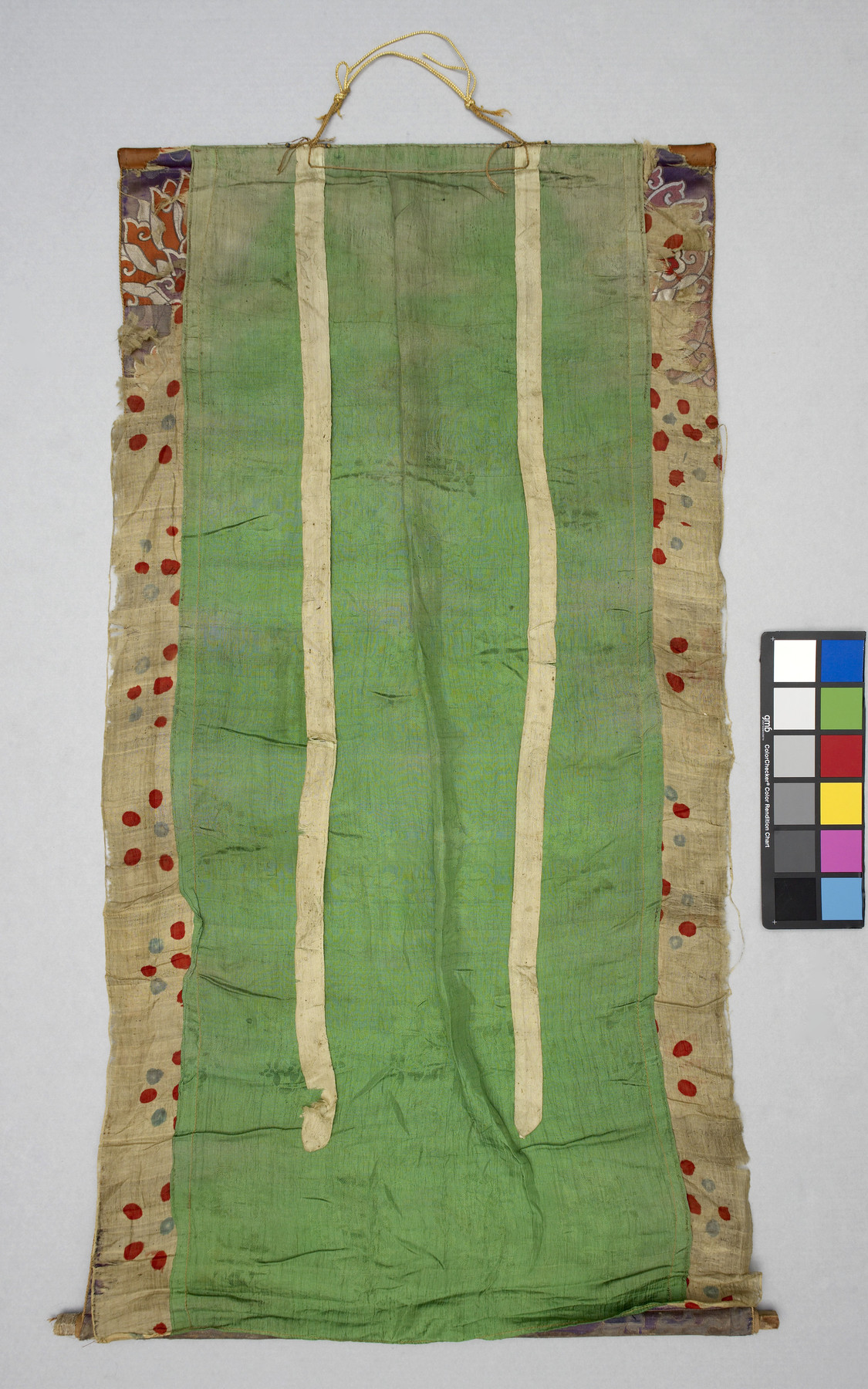Portrait of a Lama
(India, Nepal, and Tibet)
This finely detailed painting features a portrait of a lama surrounded by other figures, including monks, divinized teachers, celestial beings, enlightened deities, and a Buddha. Seated on a throne before an altar, the lama holds the stems of two lotuses, the blossoms of which support a bell and "vajra," ritual implements that in Tibetan Buddhist traditions symbolize wisdom and compassion, and thus together form the essence of enlightenment. As keepers and teachers of sacred knowledge, lamas are highly revered individuals, and their portraits are objects of veneration.
The lower portion of the painting, with its backdrop of buildings and trees, depicts the earthly realm, populated by monks who would be among those to venerate the lama and receive his teachings. Below the altar in front of the central figure, three seated monks engage in activities of monastic life: one sits with a rosary, while two others discuss a document; one monk writes as the other stamps it with a seal in red ink. In the painting’s lower right is a worldly protector god sitting in front of a building with parapets lined in human skulls; he is likely the protector of the monastery to which the central lama belongs. The figure in the lower left, where the patron is typically depicted, wears a hat similar to that of the central figure, suggesting that he is the lama’s disciple and possibly successor as leader of their monastic lineage.
The middle and upper portions of the painting, moving from mountain landscapes to a rich blue sky, progress into the heavenly realms. Here, figures are marked by halos, an indication of their divinized status. Individualized lamas and monks surround the central figure, while the Buddha directly above him, making the gesture of instruction, indicates the source of the teachings that the lama would have propagated.
The reverse is marked by handprints and footprints, each of which is embellished with leaf and lotus motifs painted in gold. The appearance of handprints and footprints on a tangka renders visible the touch of a holy person who came into contact with it, preserving the sacred presence of that individual. When prints appear on the reverse of a tangka, they endow the scroll with the permanent blessings of the lama who consecrated it.
Provenance
Provenance (from the French provenir, 'to come from/forth') is the chronology of the ownership, custody, or location of a historical object. Learn more about provenance at the Walters.
Owned by a monk from a Tibetan monastery, Darjeeling, West Bengal; given to Walter Hauser [1], Charlottesville, Virginia, 1964; given to Walters Art Museum, 2016.
[1] While living in north India
Geographies
Tibet (Place of Origin)
Measurements
Overall H: 50 3/16 × W: 23 13/16 × D: 1 in. (127.5 × 60.5 × 2.5 cm); Image H: 23 13/16 × W: 15 3/16 in. (60.5 × 38.5 cm)
Credit Line
Gift of Walter Hauser, 2016
Location in Museum
Not on view
Accession Number
In libraries, galleries, museums, and archives, an accession number is a unique identifier assigned to each object in the collection.
In libraries, galleries, museums, and archives, an accession number is a unique identifier assigned to each object in the collection.
35.321














